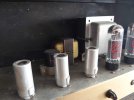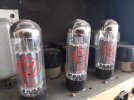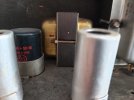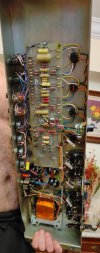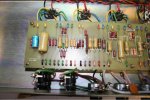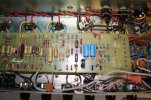I will not go into the cap thing - can of worms, there are reasonable views either way (the tyre/old oil analogy is fallacy, but often used) and there are levels of preventative maintenence to the nth degree (Rolls Royce replace every nut, bolt and washer when they do any work on their cars) but sounds like the people did the right tests and gave sound advice.
I can't tell but are you running 6550s - as that is what the amp is set up for (10k between bias caps, 82k grid leaks (aka 'bias splitters'). El34s tend to have more low end with 220k grid leaks, but you are happy with sound - why change it!
I can't tell but are you running 6550s - as that is what the amp is set up for (10k between bias caps, 82k grid leaks (aka 'bias splitters'). El34s tend to have more low end with 220k grid leaks, but you are happy with sound - why change it!



